Optimizing Water Footprint and Energy Use in Industry: A Decision Support Framework for Industrial Wastewater Treatment and Reuse Applied to a Brewery
Abstract
:1. Introduction
2. Materials and Methods
2.1. Decision Support Systems for Wastewater Treament Technologies
2.2. The Decision Support Framework Developed for Industrial Wastewater Treatment and Reuse
- Step 1 (if applicable): Evaluation of existing energy consumption, in case the industrial unit has an in-house WWTP;
- Step 2: Selection of the appropriate reuse application;
- Step 3: Selection of the treatment method/process or processes;
- Step 4: Design of the additional process for plants with an existing WWTP or the entire treatment train for industrial plants without a WWTP;
- Step 5: Environmental impact assessment and evaluation of the overall water recovery system.
2.3. Analysis of the DSF Steps’ Decision Trees
- Step 1 (if applicable): Evaluation of existing energy consumption, in case the industrial unit has an in-house WWTP
- Step 2: Selection of the appropriate reuse application
- Step 3: Selection of the treatment method/process or processes
- Step 4: Design of an additional process for plants with an existing WWTP or the entire treatment train for industrial plants without a WWTP
- Step 5: Environmental impact assessment and evaluation of the overall water recovery system
2.4. Brewery Case Study
3. Results
3.1. Implementation of the DSF—Step 1
3.2. Implementation of the DSF—Step 2
- Reuse for on-site, non-production applications, including washing corridors, external roads, etc.
- Reuse off-site for restricted irrigation of crops (BOD limit of ≤ 25 mg/L should be met).
3.3. Implementation of the DSF—Step 3
3.4. Implementation of the DSF—Step 4
3.5. Implementation of the DSF—Step 5
- Baseline scenario: No modifications to the existing wastewater treatment plant (WWTP).
- Scenario ii: Addition of a CW system without implementing an at-source collection system for diatomaceous earth, thus without energy savings.
- Scenario iii: Addition of a CW system along with an at-source collection system for diatomaceous earth, resulting in energy savings.
4. Discussion
5. Conclusions
Supplementary Materials
Author Contributions
Funding
Data Availability Statement
Acknowledgments
Conflicts of Interest
Abbreviations
| AHP | Analytical Hierarchy Process |
| BOD5 | Biochemical Oxygen Demand |
| CF | Carbon Footprint |
| COD | Chemical Oxygen Demand |
| CW | Constructed Wetlands |
| DSF | Decision Support Framework |
| DSS | Decision Support Systems |
| GHG | Greenhouse Gas |
| IDSS | Intelligent Decision Support Systems |
| JMD | Joint Ministerial Decision |
| LCA | Life Cycle Assessment |
| MCDM | Multi-Criteria Decision-Making |
| p.e. | Population Equivalent |
| SSF CW | Sub-Surface Flow Constructed Wetlands |
| SS | Suspended Solids |
| WF | Water Footprint |
| WWTPs | Wastewater Treatment Plants |
References
- The 17 Goals. Available online: https://sdgs.un.org/goals (accessed on 15 March 2025).
- Food and Agriculture Organization of the United Nations. Progress on Change in Water-Use Efficiency. Global Status and Acceleration Needs for SDG Indicator 6.4.1; Food and Agriculture Organization of the United Nations: Rome, Italy, 2021. [Google Scholar]
- Food and Agriculture Organization of the United Nations. Progress on Change in Water-Use Efficiency. Mid-Term Status of SDG Indicator 6.4.1 and Acceleration Needs, with Special Focus on Food Security and Climate Change; Food and Agriculture Organization of the United Nations: Rome, Italy, 2024. [Google Scholar]
- Capa, S.; Ozdemir, A.; Gunkaya, Z.; Ozkan, A.; Banar, M. An environmental and economic assessment based on life cycle approaches for industrial wastewater treatment and water recovery. J. Water Process Eng. 2022, 49, 103002. [Google Scholar] [CrossRef]
- Eurostat. Water Statistics. Available online: https://ec.europa.eu/eurostat/statistics-explained/index.php?title=Water_statistics (accessed on 4 August 2024).
- Hoekstra, A.Y.; Chapagain, A.K.; Aldaya, M.M.; Mekonnen, M.M. The Water Footprint Assessment Manual; Taylor & Francis: Washington, DC, USA, 2011. [Google Scholar]
- Gerbens-Leenes, P.-W.; Hoekstra, A.Y. Business Water Footprint Accoutning: A Tool to Assess How Production of Goods and Services Impacts on Freshwater Resources Worldwide; UNESCO-IHE Institute for Water Education: Delft, The Netherlands, 2008. [Google Scholar]
- Zhang, G.P.; Hoekstra, A.Y.; Mathews, R.E. Water Footprint Assessment (WFA) for better water governance and sustainable development. Water Resour. Ind. 2013, 1–2, 1–6. [Google Scholar] [CrossRef]
- Karkou, E.; Teo, C.; Savvakis, N.; Poinapen, J.; Arampatzis, G. Industrial circular water use practices through the application of a conceptual water efficiency framework in the process industry. J. Environ. Manag. 2024, 370, 122596. [Google Scholar] [CrossRef]
- Lazarova, V.; Levine, B.; Sack, J.; Cirelli, G.; Jeffrey, P.; Muntau, H.; Salgot, M.; Brissaud, F. Role of water reuse for enhancing integrated water management in Europe and Mediterranean countries. Water Sci. Technol. 2001, 43, 25–33. [Google Scholar] [CrossRef] [PubMed]
- Hidalgo, D.; Irusta, R.; Martinez, L.; Fatta, D.; Papadopoulos, A. Development of a multi-function software decision support tool for the promotion of the safe reuse of treated urban wastewater. Desalination 2007, 215, 90–103. [Google Scholar] [CrossRef]
- Kumar, A.; Thakur, A. Industrial water conservation by water footprint and Sustainable Development Goals. In Water Footprints and Sustainable Development; Elsevier: Amsterdam, The Netherlands, 2024. [Google Scholar] [CrossRef]
- Weerasooriya, R.R.; Liyanage, L.P.K.; Rathnappriya, R.H.K.; Bandara, B.; Perera, T.A.; Gunarathna, M.H.; Jayasinghe, G. Industrial water conservation by water footprint and sustainable development goals: A review. Environ. Dev. Sustain. 2021, 23, 12661–12709. [Google Scholar] [CrossRef]
- IPCC. Intergovernmental Panel of Climate Change: Climate Change: Synthesis Report. Contribution of Working Groups I, II and III to the Fifth Assessment Report of the IPCC; Core Writing Team, Pachauri, R.K., Meyer, L.A., Eds.; IPCC: Geneva, Switzerland, 2014. [Google Scholar]
- UNFCCC Greenhouse Gas Emissions Calculator. Available online: https://unfccc.int/documents/271269 (accessed on 16 February 2025).
- Arroyo, P.; Molinos-Senante, M. Selecting appropriate wastewater treatment technologies using a choosing-by-advantages approach. Sci. Total Environ. 2018, 625, 819–827. [Google Scholar] [CrossRef]
- Siatou, A.; Manali, A.; Gikas, P. Energy Consumption and Internal Distribution in Activated Sludge Wastewater Treatment Plants of Greece. Water 2020, 12, 1204. [Google Scholar] [CrossRef]
- Panepinto, D.; Fiore, S.; Zappone, M.; Genon, G.; Meucci, L. Evaluation of the energy efficiency of a large wastewater treatment plant in Italy. Appl. Energy 2016, 161, 404–411. [Google Scholar] [CrossRef]
- Molinos-Senante, M.; Maziotis, A. Evaluation of energy efficiency of wastewater treatment plants: The influence of the technology and aging factors. Appl. Energy 2022, 310, 118535. [Google Scholar] [CrossRef]
- Goliopoulos, N.; Mamais, D.; Noutsopoulos, C.; Dimopoulou, A. Energy consumption and carbon footprint of greek wastewater treatment plants. Water 2022, 14, 320. [Google Scholar] [CrossRef]
- Dimopoulou, A. Comparative Assessment of Energy Consumption and GHG Emissions in Wastewater Treatment Plants (WTP). Master’s Thesis, National Technical University of Athens, Athens, Greece, 2011. [Google Scholar]
- Maktabifard, M.; Zaborowska, E.; Makinia, J. Evaluating the effect of different operational strategies on the carbon footprint of wastewater treatment plants—Case studies from northern Poland. Water Sci. Technol. 2019, 79, 11. [Google Scholar]
- Presura, E.; Robescu, L.D. Energy use and carbon footprint for potable water and wastewater treatment. In Proceedings of the 11th International Conference on Business Excellence, Bucharest, Romania, 23–25 March 2017; pp. 191–198. [Google Scholar]
- Wang, X.; Dong, Y.; Yu, S.; Mu, G.; Qu, H.; Li, Z.; Bian, D. Analysis of the Electricity Consumption in Municipal Wastewater Treatment Plants in Northeast China in Terms of Wastewater Characteristics. Int. J. Environ. Res. Public Health 2022, 19, 14398. [Google Scholar] [CrossRef] [PubMed]
- Vaccari, M.; Foladori, P.; Nembrini, S.; Vitali, F. Benchmarking of energy consumption in municipal wastewater treatment plants—A survey of over 200 plants in Italy. Water Sci. Technol. 2018, 77, 2242–2252. [Google Scholar]
- Robescu, L.D.; Presura, E. Reducing carbon footprint of a wastewater treatment plant using advanced treatment and renewable energy sources. Environ. Eng. Manag. J. 2017, 16, 1055–1062. [Google Scholar] [CrossRef]
- Maktabifard, M.; Awaitey, A.; Merta, E.; Haimi, H.; Zaborowska, E.; Mikola, A.; Mąkinia, J. Comprehensive evaluation of the carbon footprint components of wastewater treatment plants located in the Baltic Sea region. Sci. Total Environ. 2022, 806, 150436. [Google Scholar]
- Zaborowska, E.; Czerwionka, K.; Makinia, J. Integrated plant-wide modelling for evaluation of the energy balance and greenhouse gas footprint in large wastewater treatment plants. Appl. Energy 2021, 282, 1161. [Google Scholar]
- Chen, K.-H.; Wang, H.-C.; Han, J.-L.; Liu, W.-Z.; Cheng, H.-Y.; Liang, B.; Wang, A.-J. The application of footprints for assessing the sustainability of wastewater treatment plants: A review. J. Clean. Prod. 2020, 277, 124053. [Google Scholar] [CrossRef]
- Abyar, H.; Nowrouzi, M. A comprehensive framework for eco-environmental impact evaluation of wastewater treatment plants: Integrating carbon footprint, energy footprint, toxicity, and economic assessments. J. Environ. Manag. 2023, 348, 119255. [Google Scholar]
- He, X.; Li, Z.; Xing, C.; Li, Y.; Liu, M.; Gao, X.; Ding, Y.; Lu, L.; Liu, C.; Li, C.; et al. Carbon footprint of a conventional wastewater treatment plant: An analysis of water-energy nexus from life cycle perspective for emission reduction. J. Clean. Prod. 2023, 429, 139562. [Google Scholar]
- Lee, M.; Keller, A.A.; Chiang, P.-C.; Den, W.; Wang, H.; Hou, C.-H.; Wu, J.; Wang, X.; Yan, J. Water-energy nexus for urban water systems: A comparative review on energy intensity and environmental impacts in relation to global water risks. Appl. Energy 2017, 205, 589–601. [Google Scholar] [CrossRef]
- Arampatzis, G.; Stathatou, P.-M.; Scaloubakas, P.; Assimacopoulos, D. Supporting decisions for the application of combined natural and engineered systems for water treatment and reuse. Int. J. Decis. Support Syst. 2019, 4, 2. [Google Scholar] [CrossRef]
- Ye, X.; Chen, B.; Jing, L.; Zhang, B.; Liu, Y. Multi-agent hybrid particle swarm optimization (MAHPSO) for wastewater treatment network planning. J. Environ. Manag. 2019, 234, 525–536. [Google Scholar] [CrossRef]
- Torregrossa, D.; Hernández-Sancho, F.; Hansen, J.; Cornelissen, A.; Popov, T.; Schutz, G. Energy saving in wastewater treatment plants: A plant-generic cooperative decision support system. J. Clean. Prod. 2017, 167, 601–609. [Google Scholar] [CrossRef]
- Díaz-Madroñero, M.; Pérez-Sánchez, M.; Satorre-Aznar, J.R.; Mula, J.; López-Jiménez, P.A. Analysis of a wastewater treatment plant using fuzzy goal programming as a management tool: A case study. J. Clean. Prod. 2018, 180, 20–30. [Google Scholar] [CrossRef]
- Torregrossa, D.; Marvuglia, A.; Leopold, U. A novel methodology based on LCA + DEA to detect eco-efficiency shifts in wastewater treatment plants. Ecol. Indic. 2018, 94, 7–15. [Google Scholar] [CrossRef]
- Bisinella de Faria, A.B.; Spérandio, M.; Ahmadi, A.; Tiruta-Barna, L. Evaluation of new alternatives in wastewater treatment plants based on dynamic modelling and life cycle assessment (DM-LCA). Water Res. 2015, 84, 99–111. [Google Scholar] [CrossRef]
- Zeng, S.; Chen, X.; Dong, X.; Liu, Y. Efficiency assessment of urban wastewater treatment plants in china: Considering greenhouse gas emissions. Resour. Conserv. Recycl. 2017, 120, 157–165. [Google Scholar] [CrossRef]
- Oprea, M. A knowledge modelling framework for intelligent environmental decision support systems and its application to some environmental problems. Environ. Model. Softw. 2018, 110, 72–94. [Google Scholar] [CrossRef]
- IPCC. Intergovernmental Panel of Climate Change. Constructed Wetlands for Wastewater Treatment. Supplement to the 2006 IPCC Guidelines for National Greenhouse Gas Inventories: Wetlands. 2013. Available online: https://www.ipcc.ch/publication/2013-supplement-to-the-2006-ipcc-guidelines-for-national-greenhouse-gas-inventories-wetlands/ (accessed on 1 April 2025).
- Gu, Y.; Dong, Y.; Wang, H.; Keller, A.; Xu, J.; Chiramba, T.; Li, F. Quantification of the water, energy and carbon footprints of wastewater treatment plants in China considering a water–energy nexus perspective. Ecol. Indic. 2016, 60, 402–409. [Google Scholar] [CrossRef]
- Gémar, G.; Gómez, T.; Molinos-Senante, M.; Caballero, R. Assessing changes in eco-productivity of wastewater treatment plants: The role of costs, pollutant removal efficiency and greenhouse gas emissions. Environ. Impact Assess. Rev. 2018, 69, 24–31. [Google Scholar] [CrossRef]
- BIER. A Practical Perspective on Water Accounting in the Beverage Sector. December 2011. Version 1.0. Available online: https://shift.tools/resources/776 (accessed on 1 April 2025).
- BIER. Water-Use Benchmarking in the Beverage Industry, Trends and Observations. Available online: https://www.bieroundtable.com/wp-content/uploads/BIER-Benchmarking-Publication-2010.pdf (accessed on 1 April 2025).
- BIER. Water Circularity Good Practices Guide. Available online: https://www.bieroundtable.com/wp-content/uploads/Water-Circularity-Good-Practices-Guide.pdf (accessed on 1 April 2025).
- Azizov, F.; Tahiri, T. Water Stewardship in the Beverage Industry: Corporate Best Practices. 2025. Available online: https://www.researchgate.net/publication/389043761 (accessed on 1 April 2025).
- Water Reuse Association. Advancing Water Reuse Within the Beverage Industry. Available online: https://watereuse.org/wp-content/uploads/2024/02/Advancing-Water-Reuse-Within-the-Beverage-Industry_v6.pdf (accessed on 1 April 2025).
- Renfrew, D.; Vasilaki, V.; Katsou, E. Indicator based multi-criteria decision support systems for wastewater treatment plants. Sci. Total Environ. 2024, 915, 169903. [Google Scholar] [CrossRef] [PubMed]
- Eseoglu, G.; Yapsakli, K.; Tozan, H.; Vayvay, O. A novel fuzzy framework for technology selection of sustainable wastewater treatment plants based on TODIM methodology in developing urban areas. Sci. Rep. 2022, 12, 8800. [Google Scholar] [CrossRef]
- Južnič-Zonta, Ž.; Guisasola, A.; Baeza, J. Smart-plant decision support system (SP-DSS): Defining a multi-criteria decision-making framework for the selection of WWTP configurations with resource recovery. J. Clean. Prod. 2022, 367, 132873. [Google Scholar] [CrossRef]
- Sucu, S.; van Schaik, M.O.; Esmeli, R.; Ouelhadj, D.; Holloway, T.; Williams, J.B.; Cruddas, P.; Martinson, D.B.; Chen, W.-S.; Cappon, H.J. A conceptual framework for a multi-criteria decision support tool to select technologies for resource recovery from urban wastewater. J. Environ. Manag. 2021, 300, 113608. [Google Scholar] [CrossRef] [PubMed]
- Singh, R.K.; Murty, H.R.; Gupta, S.K.; Dikshit, A.K. An overview of sustainability assessment methodologies. Ecol. Indic. 2016, 15, 281–299. [Google Scholar] [CrossRef]
- Qian, Y.; Zhao, Y.; Qian, H.; Xiang, J.; Chen, C.; Su, L.; Cai, C. Evaluation of Industrial Water Use Efficiency on an Enterprise Scale Based on Analytic Hierarchy Method and Self-Organizing Map: A Case Study in Zhejiang, China. Water 2025, 17, 901. [Google Scholar] [CrossRef]
- Muga, H.E.; Mihelcic, J.R. Sustainability of wastewater treatment technologies. J. Environ. Manag. 2008, 88, 437–447. [Google Scholar] [CrossRef]
- Molinos-Senante, M.; Gómez, T.; Garrido-Baserba, M.; Caballero, R.; Sala-Garrido, R. Assessing the sustainability of small wastewater treatment systems: A composite indicator approach. Sci. Total Environ. 2014, 497–498, 497–498. [Google Scholar] [CrossRef]
- Castellet, L.; Molinos-Senante, M. Efficiency assessment of wastewater treatment plants: A data envelopment analysis approach integrating technical, economic, and environmental issues. J. Environ. Manag. 2016, 167, 160–166. [Google Scholar] [CrossRef]
- Karimi, A.R.; Mehrdadi, N.; Hashemian, S.J.; Bidhendi, G.R.N.; Moghaddam, R.T. Selection of wastewater treatment process based on the analytical hierarchy process and fuzzy analytical hierarchy process methods. Int. J. Environ. Sci. Technol. 2011, 8, 267–280. [Google Scholar] [CrossRef]
- Lizot, M.; Goffi, A.; Thesari, S.; Trojan, F.; Afonso, P.S.L.P.; Ferreira, P.F.V. Multi-criteria methodology for selection of wastewater treatment systems with economic, social, technical and environmental aspects. Environ. Dev. Sustain. 2021, 23, 9827–9851. [Google Scholar] [CrossRef]
- Ćetković, J.; Knežević, M.; Vujadinović, R.; Tombarević, E.; Grujić, M. Selection of Wastewater Treatment Technology: AHP Method in Multi-Criteria Decision Making. Water 2023, 15, 1645. [Google Scholar] [CrossRef]
- Nydrioti, I.; Moutsaki, M.M.; Leounakis, N.; Grigoropoulou, H. Implementation of the water footprint as a water performance indicator in industrial manufacturing units located in Greece: Challenges and prospects. Environ. Sci. Pollut. Res. 2024, 31, 803–819. [Google Scholar] [CrossRef]
- Olajire, A. The brewing industry and environmental challenges. J. Clean. Prod. 2020, 256, 102817. [Google Scholar] [CrossRef]
- Ghimire, U.; Sarpong, G.; Gude, V.G. Transitioning wastewater treatment plants toward circular economy and energy sustainability. ACS Omega 2021, 6, 11794–11803. [Google Scholar] [CrossRef]
- Stathatou, P.-M.; Dedousis, P.; Arampatzis, G.; Grigoropoulou, H.; Assimacopoulos, D. Energy savings and reduced emissions in combined natural and engineered systems for wastewater treatment and reuse: The WWTP of Antiparos Island, Greece. Desalination Water Treat. 2019, 159, 13–23. [Google Scholar] [CrossRef]
- Ho, L.; Van Echelpoel, W.; Charalambous, P.; Gordillo, A.P.L.; Thas, O.; Goethals, P. Statistically-Based Comparison of the Removal Efficiencies and Resilience Capacities between Conventional and Natural Wastewater Treatment Systems: A Peak Load Scenario. Water 2018, 10, 328. [Google Scholar] [CrossRef]
- Tsihrintzis, V.A.; Gikas, G.D. Constructed wetlands for wastewater and activated sludge treatment in north Greece: A review. Water Sci Techno. 2010, 61, 2653–2672. [Google Scholar] [CrossRef]
- Galanopoulos, C.; Sazakli, E.; Leotsinidis, M.; Lyberatos, G. Dynamic model extension for the design of full-scale artificial free superficial flow wetland systems. J. Environ. Chem. Eng. 2014, 4, 2129–2135. [Google Scholar] [CrossRef]
- Foglia, A.; González-Camejo, J.; Radini, S.; Sgroi, M.; Li, K.; Eusebi, A.L.; Fatone, F. Transforming wastewater treatment plants into reclaimed water facilities in water-unbalanced regions. An overview of possibilities and recommendations focusing on the Italian case. J. Clean. Prod. 2023, 410, 137264. [Google Scholar] [CrossRef]
- Stefanakis, A. Constructed Wetlands for Wastewater Treatment in Hot and Arid Climates; Springer Nature: Cham, Switzerland, 2022. [Google Scholar]
- Crites, W.R.; Middlebrooks, J.; Reed, C.S. Natural Treatment Systems; CRC Press: London, UK, 2006. [Google Scholar]
- Wang, J.; Yu, X.; Lin, H.; Wang, J.; Chen, L.; Ding, Y.; Feng, S.; Zhang, J.; Ye, B.; Kan, X.; et al. The efficiency of full-scale subsurface constructed wetlands with high hydraulic loading rates in removing pharmaceutical and personal care products from secondary effluent. J. Hazard. Mater. 2023, 451, 131095. [Google Scholar] [CrossRef] [PubMed]
- Dessalew, G.; Beyene, A.; Nebiyu, A.; Ruelle, M.L. Use of industrial diatomite wastes from beer production to improve soil fertility and cereal yields. J. Clean. Prod. 2017, 157, 22–29. [Google Scholar] [CrossRef]
- Stefanakis, A. Constructed Wetlands Technology for Sustainable Wastewater Treatment. In Proceedings of the 4th Distance Education e-Learning Summer School “Wastewater & Biosolids Mangaement”, Athens, Greece, 18–23 July 2018. [Google Scholar]
- Gori, R.; Giaccherini, F.; Jiang, L.-M.; Sobhani, R.; Rosso, D. Role of primary sedimentation on plant-wide energy recovery and carbon footprint. Water Sci. Technol. 2013, 68, 870–878. [Google Scholar] [CrossRef]
- Power Production Breakdown in Greece 2023. Available online: https://www.statista.com/statistics/1494135/electricity-mix-greece/ (accessed on 16 February 2025).
- Lazarou, M. Water Footprint Assessment of Crops in the Municipal Unit of Larissa. Diploma Thesis, National Technical University of Athens, Athens, Greece, 2012. [Google Scholar]
- Islam, S.; Rashidul Alam, A. Performance evaluation of FAO Penman-Monteith and best alternative models for estimating reference evapotranspiration in Bangladesh. Heliyon 2021, 7, e07487. [Google Scholar] [CrossRef]

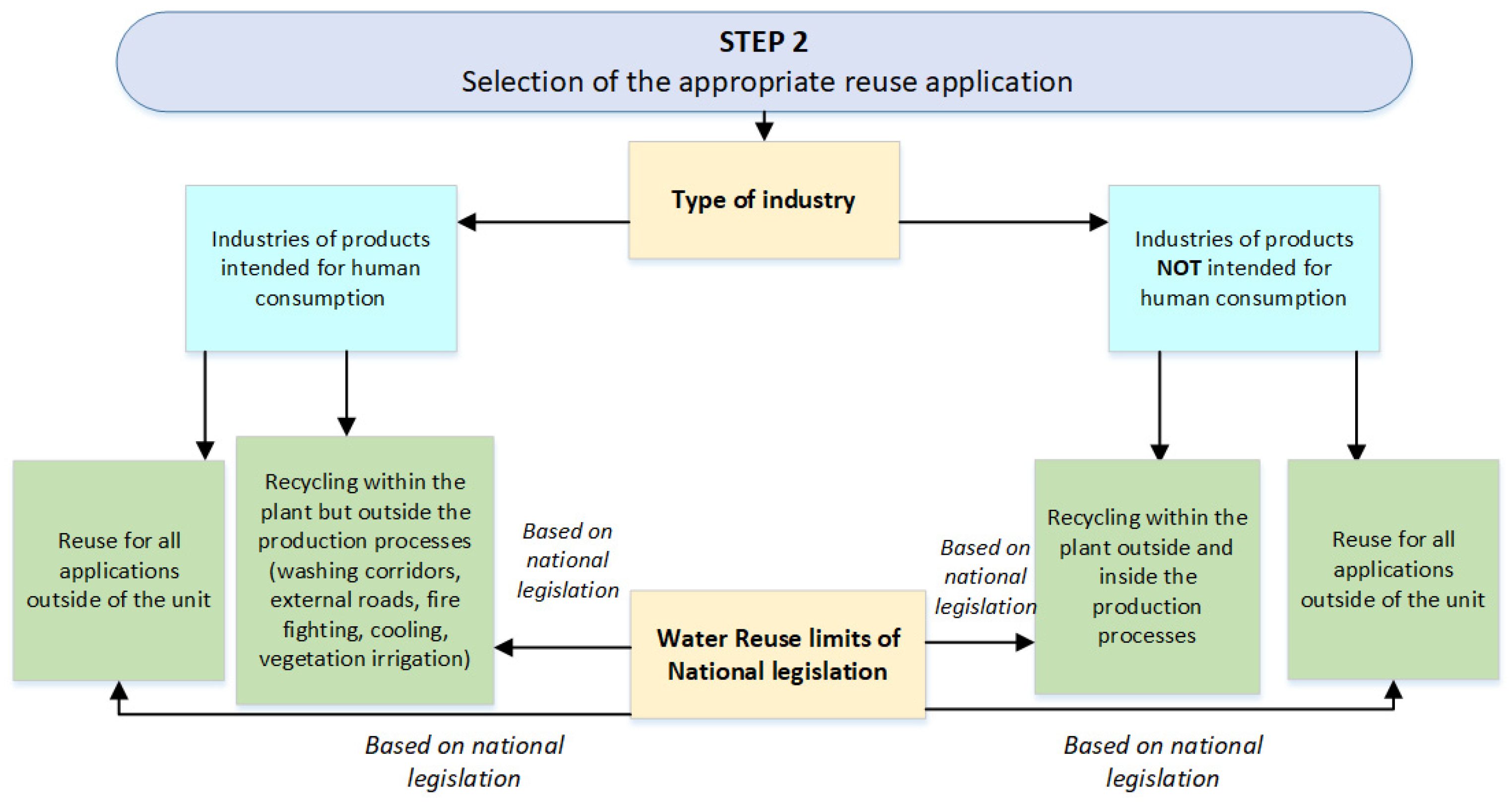

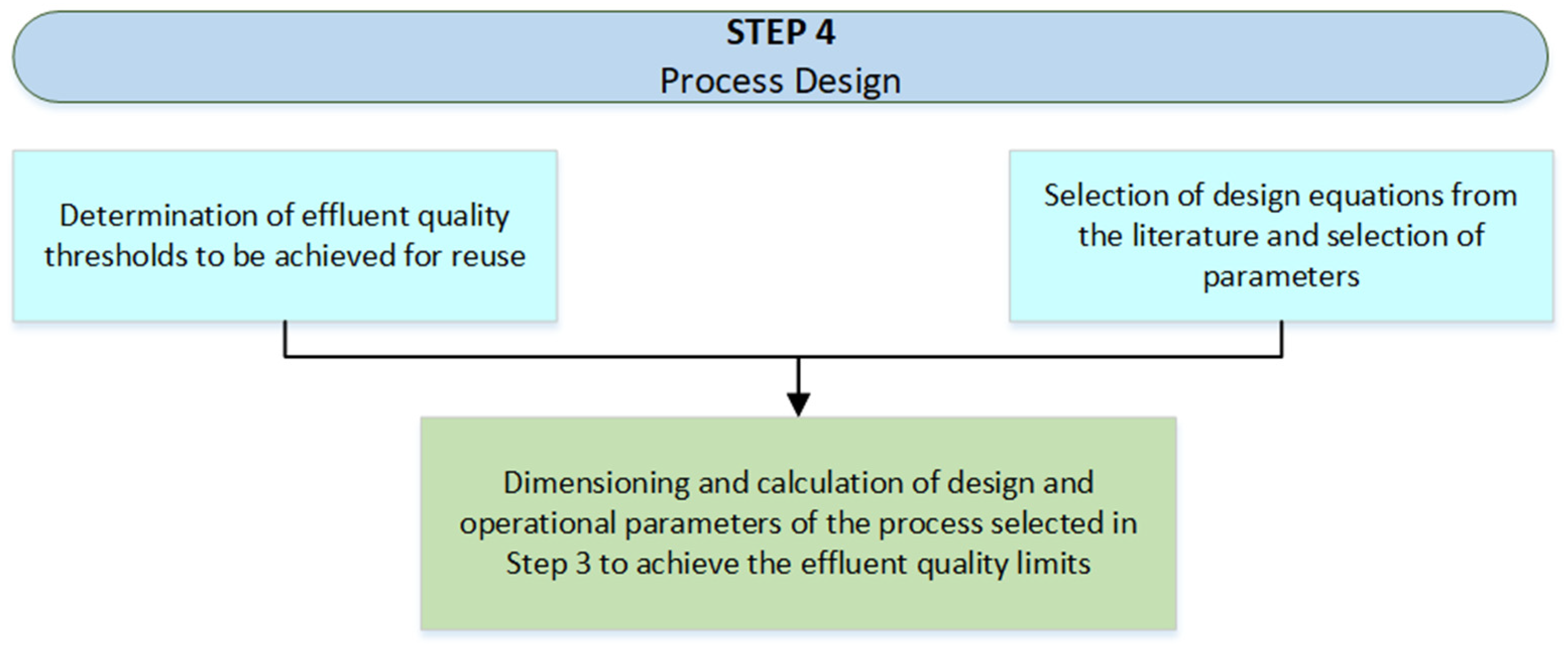
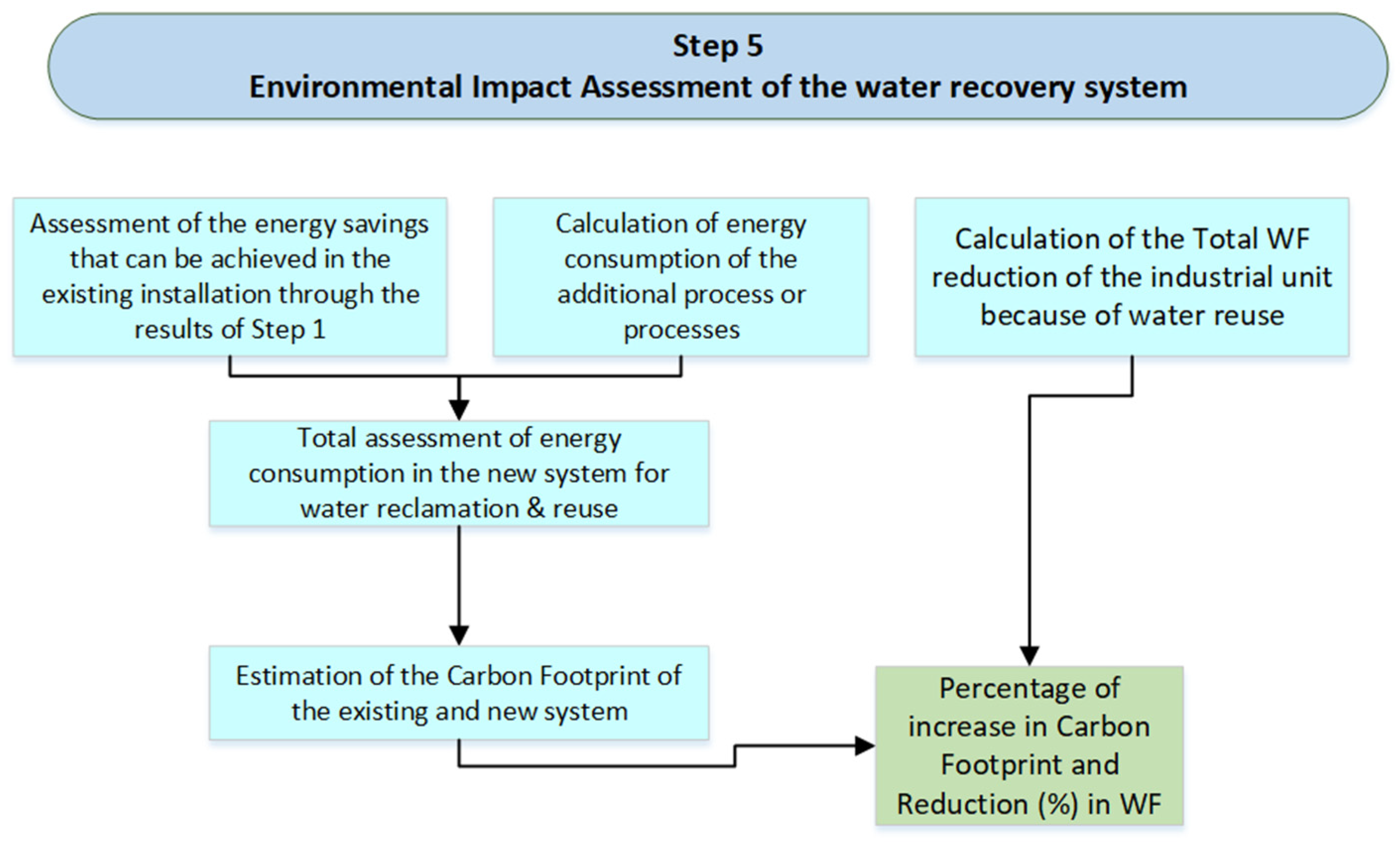

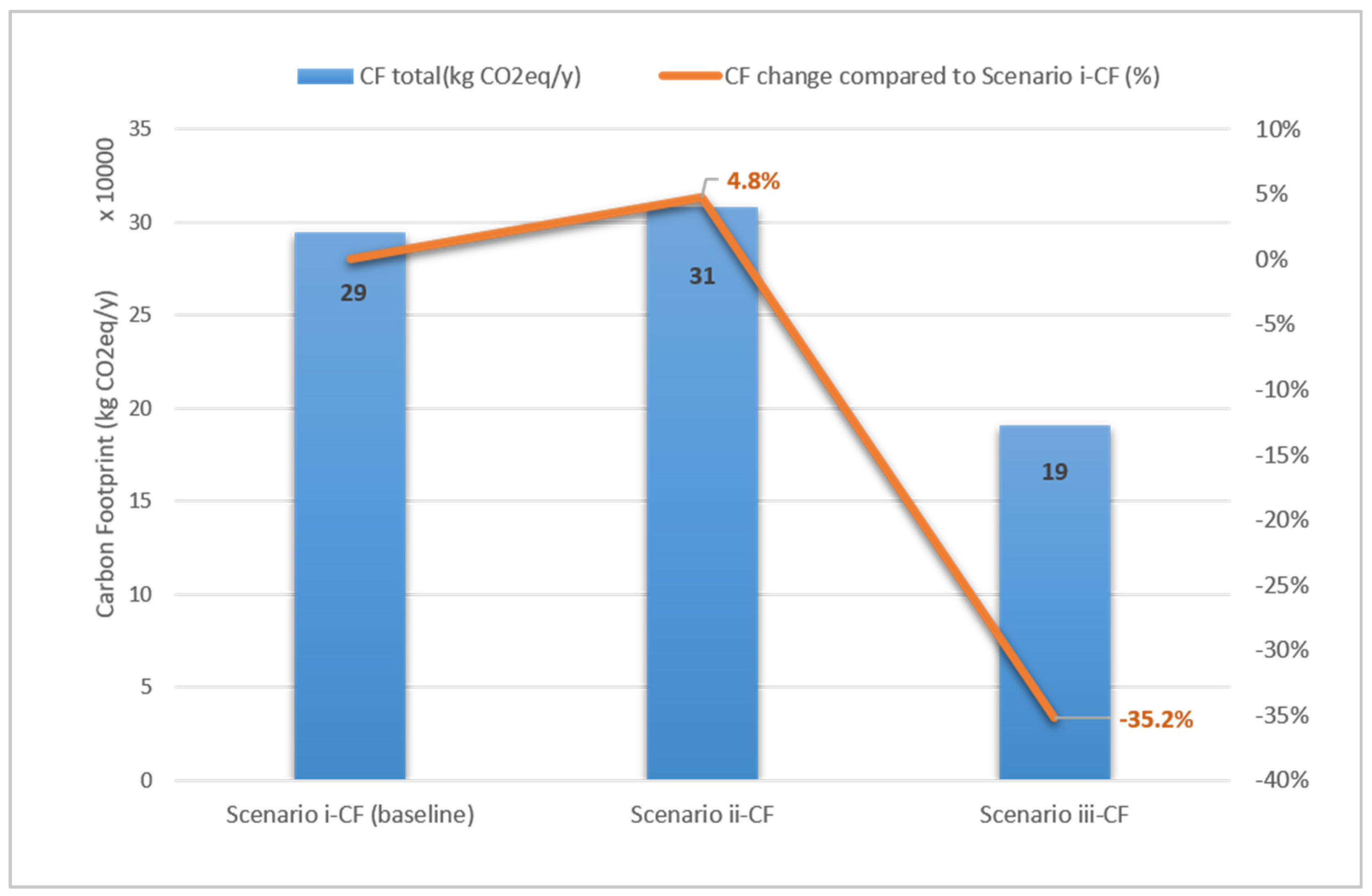
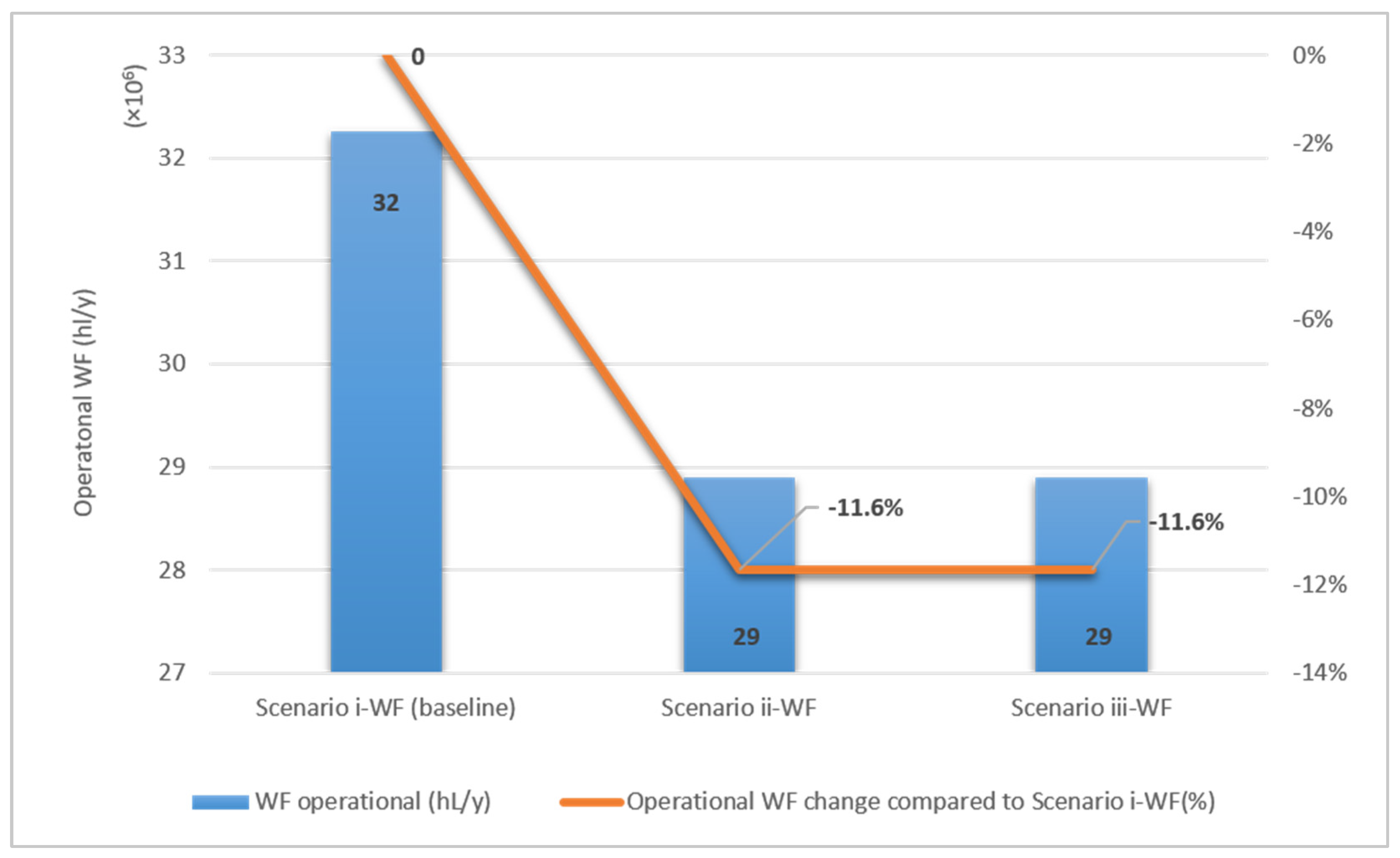

| Year | Energy Consumption in the WWTP (KWh) | Treatment Capacity (m3/d) | Treatment Capacity (p.e.) |
|---|---|---|---|
| 2019 | 1,250,076 | 26,793 | 5359 |
| Average Energy Consumption (KWh/m3) | Average Capacity (p.e.) | WW Type | Country | Source |
|---|---|---|---|---|
| 0.9 (0.13–2.28) | 18,324 (1157–56,050) | Municipal | Greece | [17] |
| 0.68 (0.12–2.19) | 85,489 (6200–169,265) | Municipal | Greece | [21] |
| 1.65 | up to 10,000 | Municipal | Greece | [20] |
| 0.43 | 10,000–100,000 | Municipal | Greece | |
| 0.33 | more than 100,000 | Municipal | Greece | |
| 0.47 | 250,000 | Municipal | Poland | [22] |
| 0.65 | 60,000 | Municipal | Poland | |
| 0.135 | 461,000 | Municipal & Industrial | Romania | [23] |
| 0.275 | 75,000 | Municipal | China | [24] |
| 0.45 | High capacity | Municipal | Italy | [25] |
| 0.6 | more than 2000 | Municipal | Italy |
| Metered Energy Consumption | Energy Consumption [21] | Yearly Difference | Energy Consumption [17] | Yearly Difference | Energy Consumption [20] | Yearly Difference |
|---|---|---|---|---|---|---|
| 1,250,076 KWh | 528,108 KWh | −42.3% | 723,420 KWh | −58% | 700,043 KWh | −44% |
| Parameter | EC | BOD5 | SS | Residual Cl2 | pH |
|---|---|---|---|---|---|
| Limits for restricted irrigation | ≤200 cfu/ 100 mL | ≤25 mg/L | ≤35 mg/L | ≥2 mg/L | 6–9 |
| Category | Criterion | Definition | Code | Source |
|---|---|---|---|---|
| Technical | BOD removal efficiency | % of BOD removed | T1 | [50,59,60] |
| COD removal efficiency | % of COD removed | T2 | [50,59] | |
| N removal efficiency | % of N removed | T3 | [50,59] | |
| P removal efficiency | % of P removed | T4 | [50,59] | |
| SS removal efficiency | % of SS removed | T5 | [50,59] | |
| Simplicity (qualitative) | Applicability of the process | T6 | [50,58,59] | |
| Applicability (qualitative) | Need for specialised personnel, special operating or maintenance requirements, simplicity of construction | T7 | [50,59] | |
| Replicability (qualitative) | Applicability of the process to changing climatic conditions and population | T8 | [50,58,59] | |
| Flexibility (qualitative) | Sensitivity to changing organic load, hydraulic load, parameter changes | T9 | [50,58,59] | |
| Reliability (qualitative) | Existing experience in how this technology can be easily applied to other places without relying on specific technical knowledge | T10 | [50,59] | |
| Economic | Investment costs | Costs for the construction/supply of the process | E1 | [50,58,59,60] |
| Area required | Area required to implement the process | E2 | [50,59] | |
| Operating costs (energy consumption, maintenance) | Costs associated with the operation and maintenance of the processes, such as manpower, energy use, etc. | E3 | [50,58,59,60] | |
| Energy savings | Energy recovery from the process to reduce the overall energy costs of the system | E4 | [50] | |
| Sludge treatment/disposal costs | Sludge treatment costs resulting from the process | E5 | [50,58,59] | |
| Environmental | Energy consumption | Energy consumption during process operation | EN1 | [50,59] |
| Sludge production | Sludge production from the process | EN2 | [50,58,59] | |
| Social | Odor generation | Undesirable odor from the process | S1 | [50,58] |
| Jobs | Job creation | S2 | [50] |
| Rejection Criterion | Reason for Rejection |
|---|---|
| T10: Flexibility (qualitative) | The hydraulic and pollutant loads in the WWTP do not show large variations |
| S1: Odor regeneration | The WWTP is within an industrial park, so the creation of odors is not a criterion |
| S2: Job creation | This is an existing WWTP, and it is already staffed |
| Rejection Criterion |
|---|
| T3: N removal efficiency |
| T4: P removal efficiency |
| T5: SS removal efficiency |
| Criteria |
|---|
| E1: Investment cost |
| EN1: Energy consumption |
| E5: Sludge treatment/disposal costs |
| EN2: Sludge production |
| T2: COD removal efficiency |
| T1: BOD removal efficiency |
| Criteria | Engineered Systems | Natural Systems |
|---|---|---|
| Investment cost | − | + |
| Sludge treatment/disposal costs | − | + |
| BOD removal efficiency | + | + |
| COD removal efficiency | + | + |
| Energy consumption | − | + |
| Sludge production | − | + |
| Inflow | Process Parameters | Outflow |
|---|---|---|
| BOD: 85.5 mg/L | Area (m2): 3000 | BOD: 25 mg/L |
| Q: 1129 m3/d | KR1: 1.47 | |
| n: 0.35 | ||
| TR (°C): 25 | ||
| y (m): 0.9 |
| Combination of Scenarios | CF | Operational WF | Supply Chain WF |
|---|---|---|---|
| Worst case (Scenario ii-CF & Scenario iii-WF) | increase by 4.8% | decrease by 10.45% | - |
| Best case (Scenario iii-CF & Scenario ii-WF) | decrease by 35.2% | decrease by 10.45% | decrease by 0.91% |
Disclaimer/Publisher’s Note: The statements, opinions and data contained in all publications are solely those of the individual author(s) and contributor(s) and not of MDPI and/or the editor(s). MDPI and/or the editor(s) disclaim responsibility for any injury to people or property resulting from any ideas, methods, instructions or products referred to in the content. |
© 2025 by the authors. Licensee MDPI, Basel, Switzerland. This article is an open access article distributed under the terms and conditions of the Creative Commons Attribution (CC BY) license (https://creativecommons.org/licenses/by/4.0/).
Share and Cite
Nydrioti, I.; Grigoropoulou, H. Optimizing Water Footprint and Energy Use in Industry: A Decision Support Framework for Industrial Wastewater Treatment and Reuse Applied to a Brewery. Water 2025, 17, 1179. https://doi.org/10.3390/w17081179
Nydrioti I, Grigoropoulou H. Optimizing Water Footprint and Energy Use in Industry: A Decision Support Framework for Industrial Wastewater Treatment and Reuse Applied to a Brewery. Water. 2025; 17(8):1179. https://doi.org/10.3390/w17081179
Chicago/Turabian StyleNydrioti, Ioanna, and Helen Grigoropoulou. 2025. "Optimizing Water Footprint and Energy Use in Industry: A Decision Support Framework for Industrial Wastewater Treatment and Reuse Applied to a Brewery" Water 17, no. 8: 1179. https://doi.org/10.3390/w17081179
APA StyleNydrioti, I., & Grigoropoulou, H. (2025). Optimizing Water Footprint and Energy Use in Industry: A Decision Support Framework for Industrial Wastewater Treatment and Reuse Applied to a Brewery. Water, 17(8), 1179. https://doi.org/10.3390/w17081179








